
Architectural Series Manual
Angled In-Ceiling / LCR / In-Wall

www.totemacoustic.com
TRIBE Architectural
TRIBE ARCHITECTURAL MANUAL
Thank you for choosing the Totem Acoustic Tribe Architectural series.
Please take the time to fully read this manual prior to beginning set-up. The manual will
clearly guide you to achieve the best possible sound that these newly acquired Totem
speakers can provide.
Beyond sonic performance, Totem has given tremendous consideration to the home
integrator. New construction or retrofit, the TRIBE Architectural speakers are easy to install
and their integrated back box ensures consistent performance in almost every situation and
application.
For further assistance, contact our tech support at info@totemacoustic.com.
UNPACKING
Totem Acoustic keeps to a strict quality control regimen and all factory-sealed products leave
our facility in perfect condition. If there are any damages visible or concealed that has
occurred in handling it must be reported immediately to your Totem Authorized Dealer.
Carefully remove the speaker(s) from the box(es). Save all custom cartons and packaging
foam for future use. They are rather expensive and may come in handy for future upgrades.
CONTENTS
Each individual box contains:
1 TRIBE Architectural speaker,
1 stainless steel, magnetic grill,
1 cutout template.
TOOLS AND ITEMS REQUIRED
Drywall saw
Speaker wire
Wire stripper
Pencil
Drill
Stud Finder
Measuring Tape
Metal hanger
Fish tool
Spray paint-optional

www.totemacoustic.com
TRIBE Architectural
GENERAL SPEAKER PLACEMENT GUIDELINES
Totem TRIBE Architectural series diffuse sound in an enormously wide, expansive manner
comparable to a flood light and illuminate a room with Totem’s holographic sound whereas
most others function like a focused, narrow spotlight, creating small, limited, acoustic “hot
spots”.
TRIBE Architectural custom speakers disperse at 75 degrees, almost twice as broadly as
competitive speakers. The soundstage and acoustic coverage is totally present throughout
the entire listening area, so it takes fewer Totem speakers to thoroughly fill a room than
competitive brands and interamalgamate with greater ease. In-walls create a soundstage
with remarkable height and width, often beyond the boundaries of the room itself. The
enormous dispersion of the in-ceilings allows the listener to enjoy the same sound whether a
seated or standing, simplifying placement.
The following chart for in-ceiling speaker spacing was calculated using the following formula:
ANGLE (dispersion) x .018 x DISTANCE (ceiling height) =SOUND COVERAGE radius
Distance Apart
Ceiling Height
Feet
Meters
8ft Ceiling
10.8
3.29
9ft Ceiling
12.15
3.7
10ft Ceiling
13.5
4.11
12ft Ceiling
16.2
4.93
14ft ceiling
18.9
5.76
15ft Ceiling
20.25
6.17

www.totemacoustic.com
TRIBE Architectural
RECOMMENDED SPEAKER WIRE
Length of Run
Suggested Wire Gauge
Up to 75 feet / 22.86 meters
16 gauge
75-200 feet / 22.86 to 60.96 meters
14 gauge
Over 200 feet / over 60.96 meters
12 gauge
PRECAUTIONS BEFORE INSTALLATION
Check for obstructions. Use an electronic stud finder to check for ceiling joists, heating and
ventilating shafts, or wall studs that may hinder cutting the required opening or the running
of the cable to your desired location.
In order to ensure proper hole size, attach the cutout template and drill a hole in the center of
the outline. Cut approximately 1’ (30cm) of coat hanger wire and bend it to a right angle in
the middle. Insert in the hole and rotate to check for wires, pipes, studs or other obstructions.
GENERAL PLACEMENT GUIDELINES
Always bear in mind that corner locations cause acoustic directionality, limit dispersion and
emphasize low frequencies.
IN WALL PLACEMENT
When using in-wall speakers as main channels,
optimal sound will be achieved when they are
mounted at or slightly above ear level. The
listening distance should be no closer than the
distance between the speakers themselves. If
they are used as surround channels, typical
placement is adjacent and behind the listener
at a height of approximately 6 feet.
STEREO AUDIO APPLICATIONS
When a pair of TRIBE Architectural Series speakers are
used for conventional stereo reproduction, OR in
conjunction with a TV, they should be placed in front
and adjacent to the TV. Whenever possible, leave
some distance from rear and side wall boundaries.

www.totemacoustic.com
TRIBE Architectural
MULTI-CHANNEL AUDIO / HOME THEATER APPLICATIONS
In a 5.1 set up, the Left, Center, and Right should be along the same plane with the Left and
Right Surround in back and adjacent to the sitting area.
In a 7.1 set up, the Left, Center, and Right should be along the same plane with the Left and
Right Surround parallel to the listening area, and the Surround channels in back and adjacent
to the sitting area.
If using in-wall speakers, the spacing is accurate, but the speakers would be installed in the
wall. In the case of the 7.1 system, the rear speakers can also be installed into the rear wall.
True to both Totem and TRIBE heritage, all models possess our characteristic phase linearity
for uncanny realism, a full range response for truly dynamic performance, and remarkably
huge dispersion that facilitates placement and fills the room. They can also intermix
harmoniously with any existing traditional, on-wall, or architectural Totem speaker for a
variety of multi-channel options. For example, if you are using TRIBE On-Wall speakers for
your front three channels you can seamlessly blend Kin Architectural for your rear speakers.
MULTI-CHANNEL AUDIO / HOME THEATER APPLICATIONS
Positioning the Angled In-Ceiling Speaker
The TRIBE AIC is composed of three active drivers on one portion of the angled baffle, and
two passives on the other. The active drivers should be
directed towards the listening area for the most direct
signal and best overall performance.
This generally means the portion with active drivers are
positioned closest to the wall and angled towards the
listening area. The passives are positioned closer to the
listening area with the drivers towards the wall.
7.1
5.1

www.totemacoustic.com
TRIBE Architectural
INSTALLATION
1-Use the provided template to trace a rectangle in pencil for the intended location. TIP:
Make a small hole in the center of the outline. Use approximately 1’ (30cm) of coat hanger
wire and bend it to a right angle in the middle. Insert in the hole and rotate to check for wires,
pipes, studs or other obstructions.
2-Carefully cut out the speaker cavity with a drywall saw or similar tool. Remove the cutaway
and lightly compress the insulation, if any.
3-Fish the speaker cable from the amplifier and out through the recently cut speaker cavity.
Allow yourself at least 1’ (30cm) of slack to protrude to facilitate the installation. Strip 3/8”
(1cm) off the ends of the speaker wires and connect to the speaker terminals. Note: Make sure
to respect polarity of the wire, connecting the negative and positive leads to the right inputs.
4-Ensure the “Dog Ears” are in their original position, flush set within the
frame, and insert the speaker in the wall or ceiling. Gradually tighten the
Philips screws on the speaker frame to fix the speaker in place. They can
handle strong torque settings, but ideally lower torque setting should be used
to prevent accidents and ensure a proper installation. Textured terminals
provide extra grip on any material, guaranteeing a solid, tight installation.
5- Place grille on speakers to complete the
installation.
PAINTING THE GRILLS
The stainless steels grilles can be painted to suit personal tastes
and match aspects of the décor. The grill incorporates a scrim-
cloth to hide the drivers when installed. This scrim-cloth is adhered
to the grill with a light adhesive and must be removed before
painting but maintains its adhesion qualities and will reattach once
painted. To remove it, gently peel from the small tab
inconspicuously located along the trim. Ideally the process would
be done with spray paint or a spray gun set to a low setting which
lessens the chance of plugging the holes. After the paint is dry, re-
apply the scrim-cloth.

www.totemacoustic.com
TRIBE Architectural
OPTIONAL ACCESSORIES
preconstruction kits are
available for all models.
AIC LCR IW
SPECIFICATIONS
Specification
TRIBE Angled In Ceiling
TRIBE LCR
TRIBE IW
Design
Full back-boxed, high-
performance
loudspeaker
Full back-boxed, high-
performance
loudspeaker
Full back-boxed, high-
performance
loudspeaker
Frequency
Response:
47 Hz - 30 kHz ± 3 dB
50 Hz - 30 kHz ± 3 dB
60 Hz - 30 kHz ± 3 dB
Recommended
Power:
30 - 140 W
30 - 140 W
30 - 140 W
Woofer:
Twin 4”/10cm
Neodymium Actuated,
Enriched MHEX woofers
with High Excursion
Surrounds in Outsized
Cast Baskets
Twin 4”/10cm
Neodymium Actuated,
Enriched MHEX woofers
with High Excursion
Surrounds in Outsized
Cast Baskets
Twin 4”/10cm
Neodymium Actuated,
Enriched MHEX woofers
with High Excursion
Surrounds in Outsized
Cast Baskets
Passive
Radiators
Dual 5" Metal
Amalgamation
Compound
Dual 5" Metal
Amalgamation
Compound
Tweeter:
Huge 1 1/8”/29mm Soft
Dome
Huge 1 1/8”/29mm Soft
Dome
Huge 1 1/8”/29mm Soft
Dome
Impedance:
6 ohms
6 ohms
6 ohms
Sensitivity
90 dB
90 dB
90 dB
Dimensions
14.09" x 14.09" x 6 1/8" /
358 x 358 x 155 mm
7.09" x 25.51" x 3.75" /
180 x 648 x 95.25mm
15.27" x 7.09" x 3.75" /
388 x 180 x 95.25mm
(W x H x D):
Cutout
13.38 x 13.38 / 340 x
340mm
6.37" x 24.8" / 161.8 x
630mm
14.56" x 6.37" / 370 x
161.8mm
Grill Type
Magnetic, Paintable,
virtually bezel-less white
metal
Magnetic, Paintable,
virtually bezel-less white
metal
Magnetic, Paintable,
virtually bezel-less white
metal
accessories
Pre-Construction
Brackets
Pre-Construction
Brackets
Pre-Construction
Brackets

www.totemacoustic.com
TRIBE Architectural
TOTEM LIMITED WARRANTY
Totem speakers must be purchased from a TOTEM AUTHORIZED DEALER.
Keep your original bill or receipt obtained from your Totem Authorized Dealer. Retain the
sturdy carton and all packing material; if needed, it will prove invaluable for damage-free
transport or storage and upgrade purposes.
All Totem products are created with the utmost care and quality in mind. If ever a problem
should arise, Totem Architectural speakers are covered by a five (5) year limited warranty,
starting from the date of purchase. The Totem limited warranty applies to products in normal
home use only.
The warranty is void if serial numbers have been altered or removed. The warranty is void if
products have been tampered with or show signs of abuse.
The warranty on speakers is void if the voice coils are burned or damaged as a result of
overpowering or clipping.
The speakers require at least 75-100 hours of actual music playing time as a minimal break-in
period. During this time, refrain from playing them at very loud levels. You will notice a
definite gradual improvement in the cohesiveness of the music reproduction as this occurs.
REGISTRATION
We would very much appreciate if you took the time to register your product online. Product
registration leads to quicker assistance and more efficient support in the rare case that your
speaker should have a problem. This can be done quickly and easily in the support section of
our site:
https://totemacoustic.com/register-your-product/
If you require additional information or further assistance on the Totem you’ve discovered,
contact your TOTEM AUTHORIZED DEALER or visit the warranty section of the Totem website
at:
https://totemacoustic.com/warranty/
Follow and Like us on Facebook:
https://www.facebook.com/totemacoustic/
We reserve the right to any future change or modification without notice.
For further assistance, contact your TOTEM AUTHORIZED DEALER or visit the Totem website
at www.totemacoustic.com
-
 1
1
-
 2
2
-
 3
3
-
 4
4
-
 5
5
-
 6
6
-
 7
7
-
 8
8
TOTEM Tribe Architectural LCR User manual
- Type
- User manual
- This manual is also suitable for
Ask a question and I''ll find the answer in the document
Finding information in a document is now easier with AI
Related papers
-
 TOTEM Tribe Solution Sub User manual
TOTEM Tribe Solution Sub User manual
-
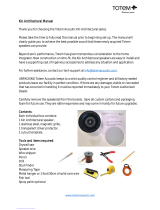 TOTEM Kin IC62 User manual
TOTEM Kin IC62 User manual
-
 TOTEM Kin IC62 User manual
TOTEM Kin IC62 User manual
-
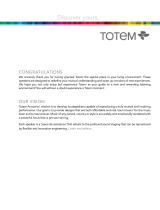 TOTEM Tribe V User manual
TOTEM Tribe V User manual
-
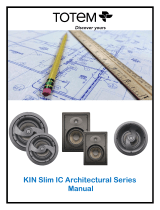 TOTEM KIN IC8 Slim User manual
TOTEM KIN IC8 Slim User manual
-
 TOTEM Tribe Duo User manual
TOTEM Tribe Duo User manual
-
 TOTEM TRIBE IN-WALL SUBWOOFER 12 User manual
TOTEM TRIBE IN-WALL SUBWOOFER 12 User manual
-
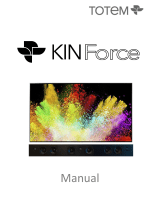 TOTEM KinForce Multi-Channel Magic User guide
TOTEM KinForce Multi-Channel Magic User guide
-
 TOTEM Element Fire User manual
TOTEM Element Fire User manual
-
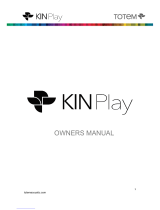 TOTEM KIN Play Owner's manual
TOTEM KIN Play Owner's manual
Other documents
-
Hasbro Native Americans Operating instructions
-
Koss 76 User manual
-
Eurotech SekuFACE Owner's manual
-
Tannoy VLS 30-WH Quick start guide
-
Tannoy iW 62DS-WH Quick start guide
-
Turbosound NSPIRE iP300 600 Watt Powered Column Loudspeaker User guide
-
Ipevo TOTEM 360 User guide
-
Turbosound iQ12 Quick start guide
-
SoundCraft Si Impact User manual
-
Tannoy VX 5.2 Quick start guide

















